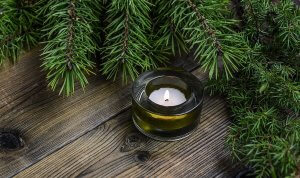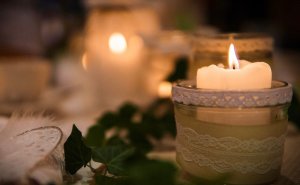As the world’s only source of illumination for centuries, candle making has a rich and noble past that dates back at least 5,000 years. Candles were used in almost every culture in the ancient world but exactly which civilization was the very first to create them is information that is long lost to the mists of time.
Candle manufacturing has since become a highly profitable industry, but how do you stand out from a sea of competition with fragrances that capture the largest market possible? If you’re a candle manufacturer or aspire to be one, it’s always wise to study the past to emblazon a path to a financially successful future.
We’ve spent years refining a technical and creative expertise in working with various waxes, broadening our in-house, olfactive performance-testing capabilities, and developing candle and reed diffusing oil fragrances for some of the largest (and smallest) candle makers in the world. With decades of experience measuring trends, we’ve taken what we’ve learned and created the following guide to help provide a detailed history of the craft, some key business statistics and industry factoids as well as the tips we’ve learned about how to choose the most marketable candle fragrances in an ever-growing market.
Candles And The Ancient World
It is believed that the ancient Romans used candles beginning circa 500 B.C., using a process that involved dipping papyrus repeatedly in melted tallow (fat from cows or sheep). For the Romans, candles were mostly used in oil lamps and religious ceremonies and often given as gifts during the celebration of Saturnalia The Egyptians were using wicking candles long before the Romans, dating as far back as the year 3,000 BC.
Historians have found evidence that the ancient Chinese developed wicked candles by molding them in paper tubes. Rice paper was used to create the wick and the wax resulted from combining indigenous insects and seeds. The ancient Japanese made waxen candles from tree nuts, and in India, boiling fruit extracted from the cinnamon tree created candle wax and perhaps the world’s earliest scented candles. They were integral to early religious ceremonies as evidenced by Hanukkah, the ancient festival of lights, which dates back to 165 BC, and a sacred Easter service in the 4th century conducted by the Emperor Constantine.
Candle Development During The Middle Ages
During the Middle Ages, beeswax candles were introduced in Europe. They were a great improvement over the animal-based tallow, as they burned cleanly and purely, producing no smoke.

Mostly used in religious ceremonies, they were expensive and available only to the very wealthy. In England and France, candle making became a guild craft. By the 13th century, chandlers (candle-makers) traveled to villages from house to house making candles from kitchen fats, or they sold their own candles in shops.
Early Candle Making In The Americas
On the other side of the ocean, the first American contribution to candle making occurred during colonial times and came from women who produced a clean-burning sweet smelling wax for candles by extracting and boiling the berries of bayberry bushes. This was the first scented candle produced in the New World, but the process was tedious, labor-intensive and it required a huge amount of bayberry leaves to produce one single candle.
The 18th century and the whaling industry revolutionized the art of candle making. It marked the introduction of the very first “standard candles,” and spermaceti (a wax made from sperm whale oil), which became available in huge quantities. Resulting candles burned cleanly, without odor and more brightly than ever before. The 19th century also brought about improvements in wax extraction and machines that permitted mechanized production. For the first time, candles were both available and affordable for the masses.
Candle-Making In The Late 19th and 20th Century
The candle industry declined sharply in the late 19th century due to the introduction of superior methods of lighting, including kerosene and lamps. However, from the dawn of the 20th century well into the 1950s, candles enjoyed a renewed popularity even though they were no longer a major source of illumination for the modern world. Then, by the mid 1980s, candles sort of reinvented themselves and became decorative accents for home and hearth. They became integral to home décor and burst upon the marketplace in a wide assortment of sizes, shapes, colors and for the first time, even scents.
The unusual increase in the demand for candles during the 1990s brought about the development of new types of candle waxes such as soybean and palm wax, which were much softer and slower burning than the more conventional paraffin. Today, candles are still very popular among consumers. They have come to symbolize celebrations of all kinds and enhance pleasant moods and romantic settings.
Today’s Candle Industry: Facts And Statistics
Modern candle manufacturing is a multi-billion dollar industry, despite the fact that candles aren’t a necessity. The two biggest manufacturers are private corporations, namely: SC Johnson & Sons and Yankee Candle. Proctor & Gamble, which is a publicly traded company that produces many home-based products including candles, has a net worth of more than $200 billion.

According to the National Candle Association and Mintel, sales in the United States reached approximately $3.2 billion annually in 2015, but this figure may be a bit misleading because it does not include accessories such as candlestick holders.
Some Interesting Facts About Candles
Almost one-third of all candle sales occur during the holiday season and according to several surveys, women buy 96% of all candles purchased. Research has indicated that fragrance is the number one factor affecting candle sales. Within the United States, there are about 400 companies that manufacture candles and many crafts people who make and sell candles for local or non-commercial use. In addition, there are as many as 2,000 types of candles and more than 10,000 scents to choose from! American candle manufacturers use more than a billion pounds of wax annually, with paraffin being the most commonly used followed by beeswax, soy wax, palm wax and blended varieties.
How To Create A Candle Fragrance
Whether you’re a large candle manufacturer, or you’re an entrepreneur considering candle making as a profession, you may be surprised to learn that in the case of a fragranced candle, the scent can be more expensive than the wax used to make it. Determining the proper amount of scent cannot be standardized, as it is almost always a personal decision.

Always remember however, that scents have a point of diminishing return, and adding more to a wax may be superfluous and end up being more costly. Bear in mind as well that some fragrances, such as French vanilla, cinnamon and mulberry are by nature stronger scents. This brings us to a term that every candle manufacturer should understand, ‘scent throw’, which concerns the strength of any fragrance used for a candle. It refers to how the candle smells while the wax is solid (cold throw) and how much aroma is emitted after it has been lit (hot throw).
5 Tips To Maximize The Scent Throw Of Your Candles
1. Use the recommended percentage of fragrance oil for the type of selected wax.
2. Add the fragrance oil at 185Fº, stirring gently until thoroughly combined with the melted wax.
3. Take your time curing the candles before testing them. Allow a minimum of 24 hours, but as long as one to two weeks is completely acceptable.
4. Place a lid on each candle and store them away from excessive heat or light.
5. Take note that you can use multiple wicks with larger candles to help with their hot throw.
The Different Waxes Used For Candle Making
The number of options available for both prospective and seasoned candle makers can be overwhelming. Some may not know that the word that precedes ‘wax’ on a label can greatly impact results either negatively or positively. Wax is a generic term covering a myriad of products that range from petroleum-based, beeswax and animal-based to synthetic-based materials. Soy and vegetable-based waxes have also gained in popularity over the course of the last few years.
Paraffin Candle Wax
The terms, candle wax, paraffin, blended, straight, natural and vegetable wax all result in different types of candles. In the broadest of terms, all waxes break down into two basic types; blended waxes or straight paraffins (not blended.) If you are a small candle-making company, you might opt to focus on manufacturing those types of candles that larger manufacturers avoid. These include but are not limited to: natural candles, chunk candles and other specialty type candles. Select the wax that best suits your needs at the best price you can find.
A straight paraffin wax is not altered by the addition of additives. The most important things to know about wax concern the melting point, the oil content, and, in some applications, the hardness of the wax. An understanding of these variables will aid in any candle maker’s wax selection. In the long run, using a straight paraffin wax will be the most cost-effective. If you are a candle maker, you know that patience is required because time-consuming testing is needed to acquire the knowledge about which additives work best for the wax that will create your desired candle fragrance.
Blended Candle Waxes
Blended waxes have their advantages. For one, their formulas already contain additives, which can save the candle maker significant time. They also have the advantage of being consistent from batch to batch, which makes their use much easier. With blended waxes, however, creativity is curbed somewhat in terms of the appearance of the finished candle. This is due to the fact that most blends are created for specific candle applications, such as jars, votives, pillars and tapers.
Percentages of Fragrance To Wax
As far as finding the right balance of the amount of fragrance to wax, it truly depends upon personal preference and desired hot throw. However, a general rule of thumb for strongly scented candles is 1 ounce of fragrance per pound of wax (6.25%). Of course, you should keep in mind that the more fragrance you add to the candle, the higher the cost will be. Conversely, lower cost candles (say those you’d find at a dollar discount store) would have less then 6.25% fragrance.
Some Important Characteristics Of A Candle Fragrance
Four important factors to consider when creating a candle fragrance are: gender appeal, character of scent, prevailing notes and a name. For effective marketing, a candle fragrance should have its target audience. Is it for men or women? Will it appeal to younger or older consumers? Two, what is the character of your candle fragrance? Is it casual, flirty, sensual, glamorous or natural?

What specific notes are you hoping to include in your candle fragrance? Are you leaning towards floral, fruity or oriental? Bear in mind here that some notes, such as vanilla and sandalwood, are stronger than others. Lastly, when naming your fragrance consider two elements: one, how will the consumer feel about the chosen name and secondly, what kind of bond will the chosen name have with the consumer? A good name must always link to the candle fragrance itself.
Five Of The Most Popular Candle Scents
We’ve created a vast array of candle fragrances in our many years of business, and over time certain types of scents surface as top sellers — some candle scents are always more popular than others. These include:
1) The definitely masculine, Citron Blossom Cassis
2) Nostalgic Beachwood Vetiver & Sea Spray Driftwood
3) The evocative and mostly feminine Huckleberry Sugar Blossom
4) Sweet, feminine Amber and Vanilla Blossom
5) Aromatic and zesty Red Currant Persimmon
For more information on candle fragrances, their history and other top scents, please visit The Top Selling Fragrances for candle manufacturers, or you can peruse our extensive repertoire of fragrances, which includes pretty much every scent you could ever dream up. If your olfactory senses are still curious, reach out to us and our chief perfumers will be happy to conjure up any combination you have in mind!
In Conclusion
Candle making is an industry with a rich and colorful past that has endured despite centuries of evolution and change. They may no longer serve the world as the only source of illumination, but the allure of candles and their scents is still deeply rooted within the hearts of the more creative souls among us. The candles burn sweetly and almost as brightly as the imagined artistry that created them.
Final thoughts about candles: You know you’re getting old when you get that one candle on the cake. It’s like, ‘See if you can blow this out.’ ~ Jerry Seinfeld
This article was written with the research, direction and insight of our CEO, Arnold Zlotnik, our master perfumer, Roger Howell, and the Alpha Aromatics perfumery management and staff. Read more about our company’s mission, our strict adherence to regulatory and environmental quality standards as well as the creative intent we place behind every blended candle fragrance we create.
 alpha aromatics®
alpha aromatics®